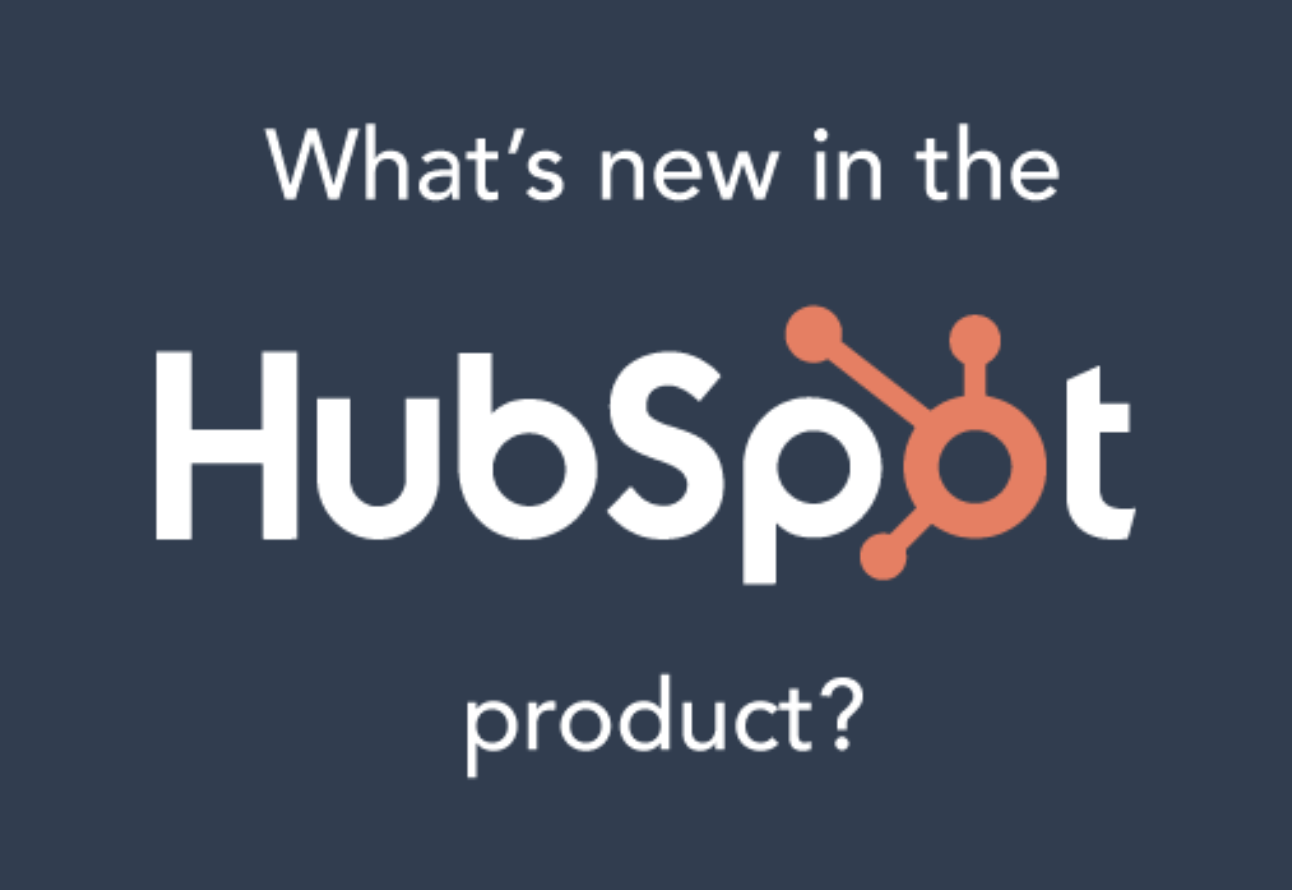Automated lead nurturing is a powerful way to curate an email experience that sends your audience the right emails at the right time in their buying journey. According to Forrester Research, companies that excel at lead nurturing generate 50% more sales leads at 33% lower cost per lead.
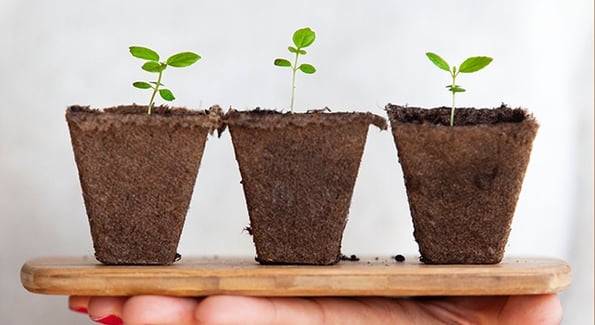
On the classroom training team, I help customers learn how to design and implement their automated lead nurturing in a classroom setting. Although each business needs to provide different messaging, there are several nurturing scenarios I see my customers commonly using to connect with their contacts.
Below are 16 lead nurturing scenarios you can use to grow a relationship and drive business with your leads and customers.
1. First Conversion Nurture
This nurturing path is intended to serve your visitors with exceptional content immediately after their first form submission. The information you send to a lead in their first few emails sets the tone for what their entire email experience will be; with automation, you can curate a positive nurturing experience for your new leads.
If you have not used automation for lead nurturing before, this is often a good scenario to start with. As shown below, you will need to enroll contacts whose Number of form submissions contact property is equal to 1 and their Source property is none of Offline Sources. By exluding offline sources, you will not include the contacts that you manually imported.
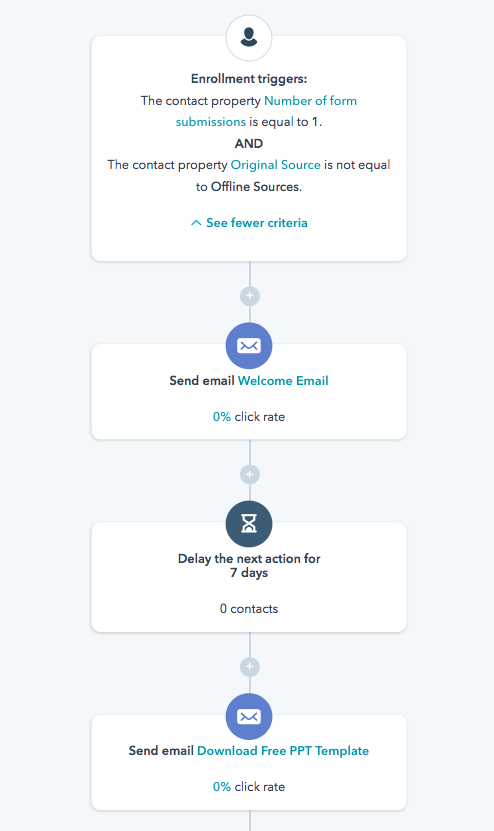
2. Lesson-Based Nurture
One of the most effective ways of engaging and building rapport with leads is by providing them with value through education. This can help establish trust and keep your company top of mind as you communicate with your leads in a non-promotional way.
Using HubSpot workflows, you can build an automated lesson plan your leads can opt into. Whether you are sending a digital lesson and activity once a week, twice a week, or every day for one week, a curriculum-style nurturing plan is a great way to send your leads emails that they already expect in their inbox.
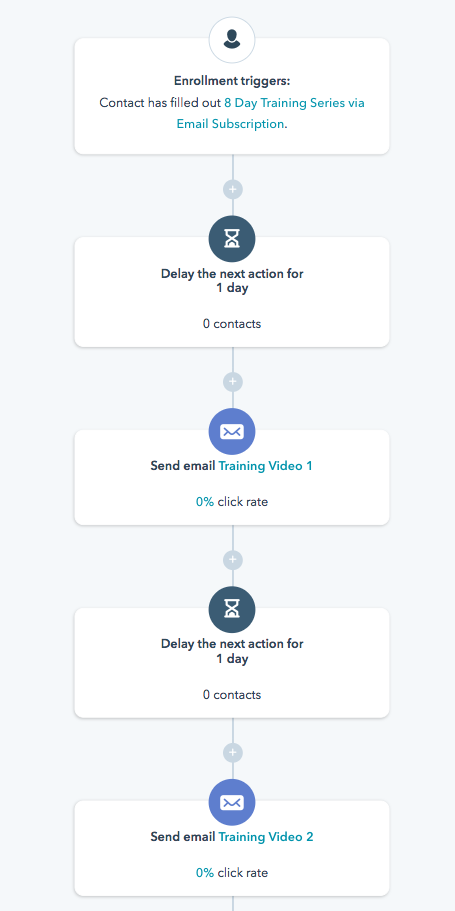
3. Event/Webinar Registration Nurture
If you host your own events or participate in industry events, you might consider creating lead nurturing plans that automatically send your contacts emails promoting registration. This particular method is best executed with a fixed date workflow that centers all emails around one specific date. To avoid letting your event become redundant in your contacts' inboxes, try to spotlight different speakers, topics, or value propositions alongside your event registration CTA.
If these are events that you host regularly, these workflows and emails can be cloned and updated to reduce a lot of the work that leads up to events and webinars. Note: This email should either include a suppression list or goal that removes contacts from the workflow when they register for the event.

4. Registration to Attendance Nurture
While registration for an event is often a primary nurturing goal, attendance is just as important. Within HubSpot, you can create workflows that send informative emails to your contacts that have registered. This will ensure that they have time carved out in their calendar for your event.
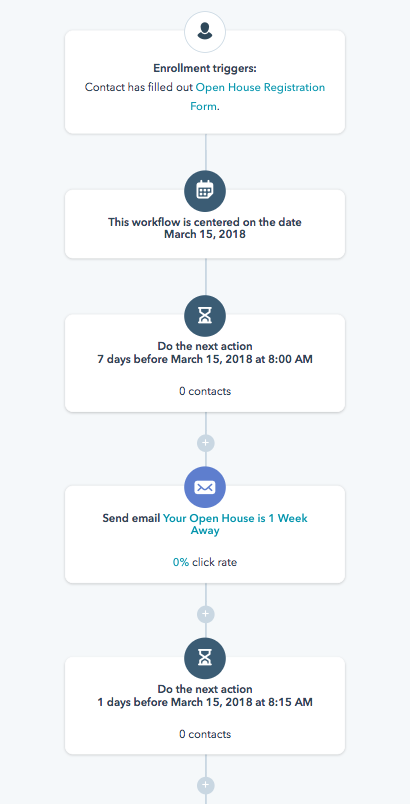
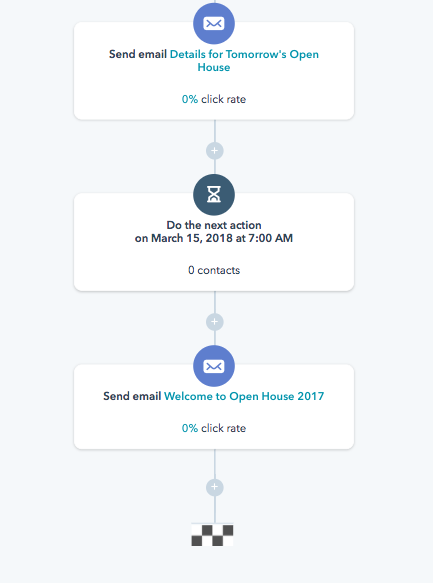
5. Product/Service Launch Nurture
Creating buzz around a new product launch is no easy task, and it can be helpful to pre-program the series of emails you want to send out leading up to the launch. These emails can often include the option to subscribe to a notification when the product/service goes live, along with additional information about the features of that new product.
6. New Customer Nurture
Once someone becomes a customer, there are typically some initial emails that need to be sent out in order to welcome the customer to ensure that they have all of the materials they need to start using your products or services. Automating these emails can help eliminate some of the tasks that go hand in hand with closing a new customer.
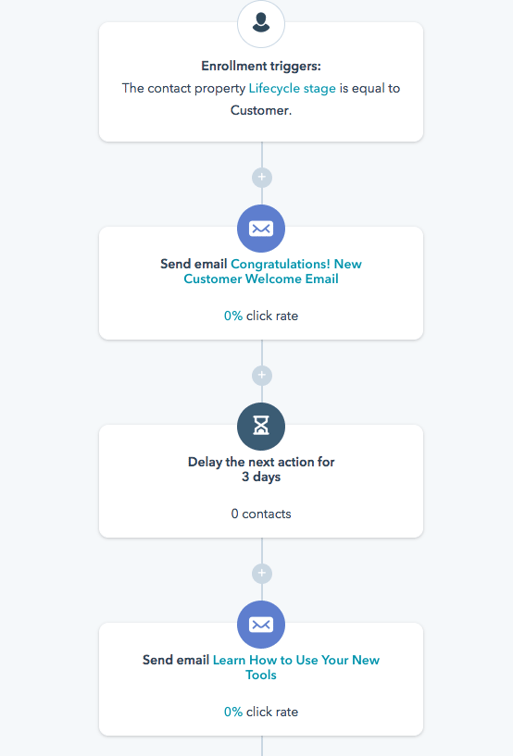
7. Onboarding Nurture
Companies strive to create an exceptional experience for their customers in order to help influence referrals and customer loyalty. The months that follow someone becoming a customer have a crucial impact on how a customer views their overall experience.
Making sure that your new customers have all of the information they need to feel supported and successful with your products/services from the start will help you develop promoters. Using email automation, you can ensure that each of your new customers are learning exactly what they need in order to get the most out of their purchase.
8. Legacy Customer Nurture
If you are able to track your customers' usage of your products, you can create nurturing that is triggered by low usage. These emails might include information about some underused features they have access to or resources that can help them see better results with their products.
9. Refill/Renew Nurture
If your sales process requires refills or renewals, you can automate emails to remind your customer when that time approaches. These workflows could also include internal reminders to your sales or account team to notify them when a customer's renewal date is getting close.
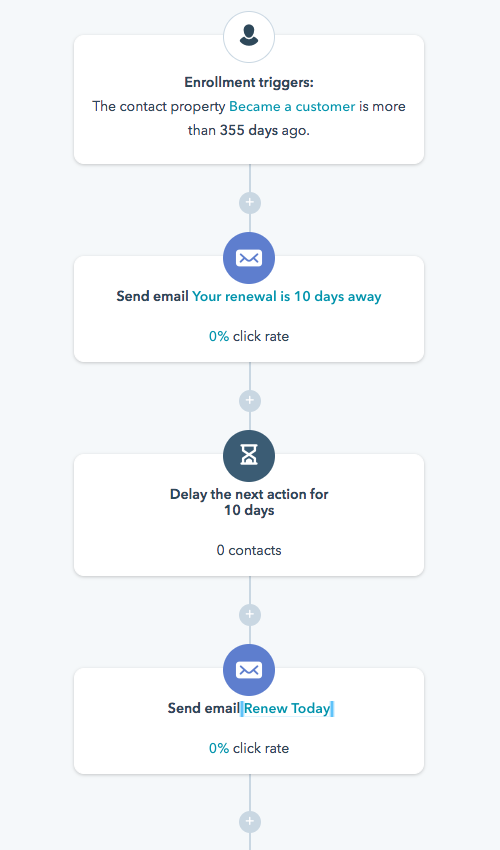
10. Abandon Cart/Conversion Nurture
If you have an ecommerce business model, you might consider creating automated reminders or discounts when a contact abandons a purchase. For non-ecommerce models, you might consider having a similar style workflow in place when a contact views a form/registration and does not complete the form.
The screenshot below is an example of a workflow that would send a reminder email to people who visited a registration page but did not submit the form.
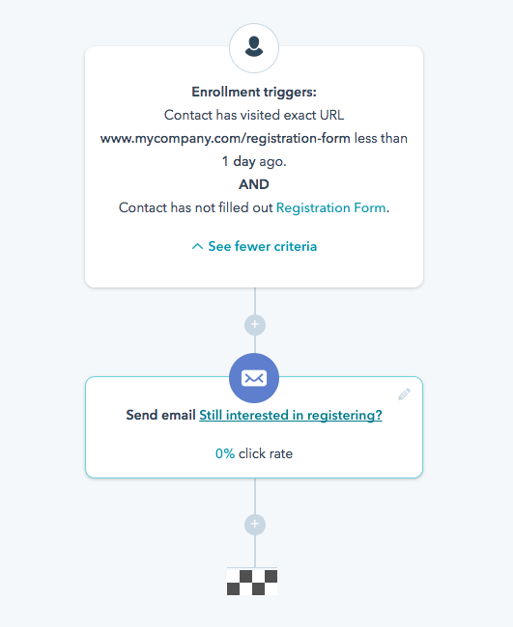
11. Deadline or Reminder Nurture
This particular nurturing model is intended to notify contacts when an important date is approaching. For example, many finance companies will have promotions and reminders centered around the tax deadline. Holidays and seasonal nurture can also be another opportunity to create nurturing plans that automatically send emails leading up to that date.
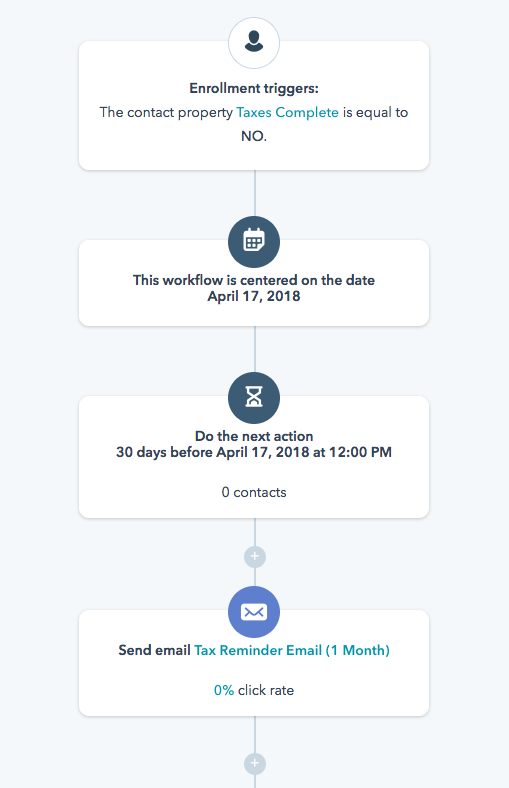
12. Free Trial Nurture
This method of nurturing consists of sending emails to help someone see the value of your products within their trial period. For some teams, this nurturing might be handled 1:1 by the sales team, whereas for others with a larger lead volume, this nurturing can be managed with a HubSpot workflow.
13. Milestone Nurture
One small way of delighting your customers is by celebrating their customer anniversary. Using a HubSpot contact date property workflow, you can send out emails annually on the day a contact became a customer to show them how much you appreciate having them as a customer.
If you have ways of tracking a customer's success with your products or services, you might also consider triggering emails to be sent out when a customer reaches a particular goal of theirs.
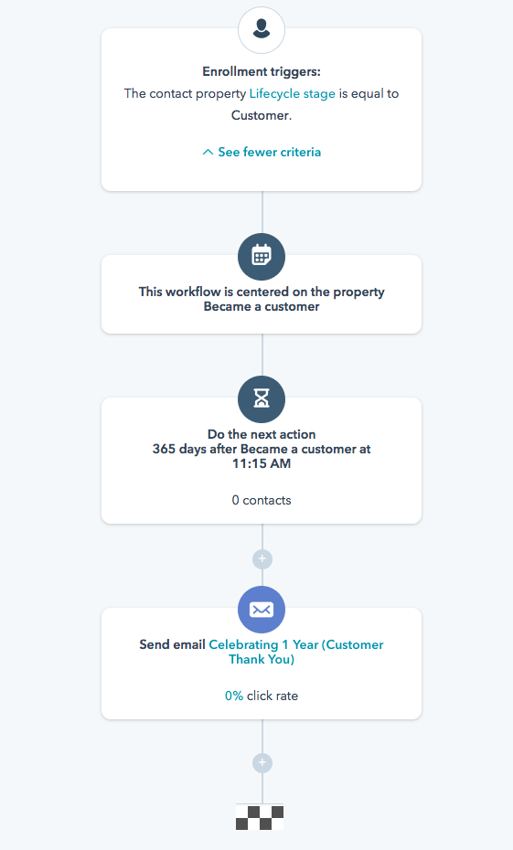
14. Add-On Nurture
If your products go hand in hand with additional add-ons or other items or services, you might consider waiting a certain period of time to promote those products. Within a workflow, you can create a delay between when a person purchases and when you begin to promote to them again.
15. Consultation/Demo Nurture
This nurture is intended to gradually transition contacts from your more educational materials to potentially considering a consultation, demo, or more product-related materials. Timing is key with this style workflow, but it is important to ensure that this transition is done without rushing the lead.
16. Feedback Initiatives
Gathering survey information from your leads is no easy task, but you can leverage your automated emails to gather information for individual questions you might have. Simply ask your question in both the subject line and the body of your email, and give your contacts the option to answer via replying or clicking on a particular CTA button.
For example, if you were asking a yes or no question, you could have one CTA button that reads "Yes" and another button that reads "No." Within HubSpot, you will be able to see your results and segment based on answers.
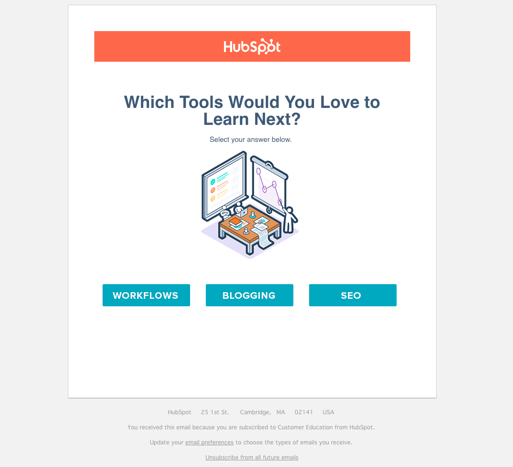
What's Next?
With any email automation you design, be sure to pay attention to your open and click engagement as well as your unsubscribe rate. Use these metrics to guide your decision-making around the frequency of your emails and the format or topics of content you send. This information will also help you grow your lead nurturing strategy and become more segmented and agile in the email automation you build.

